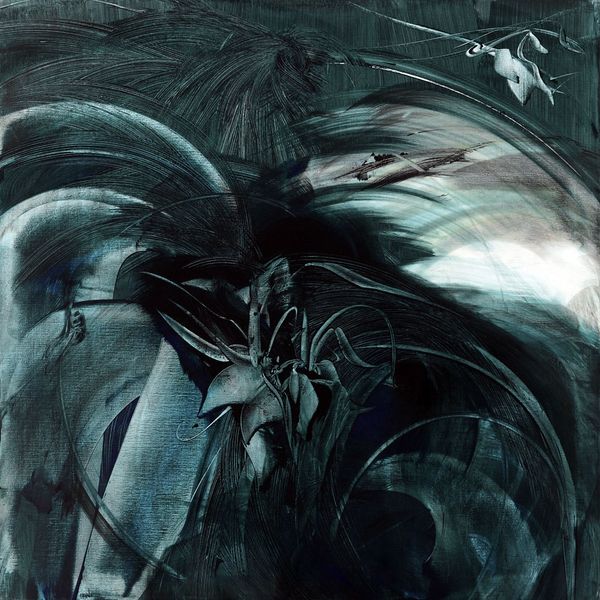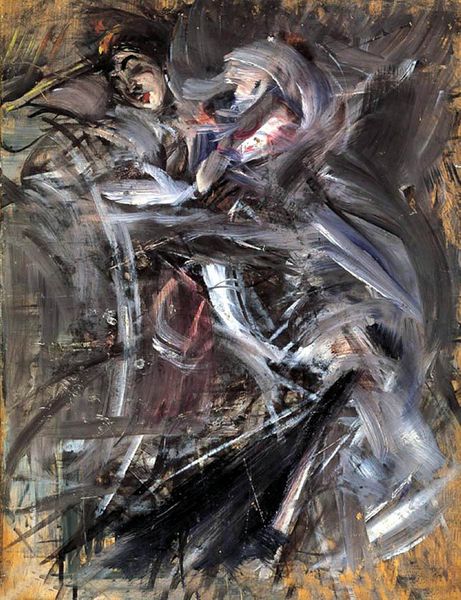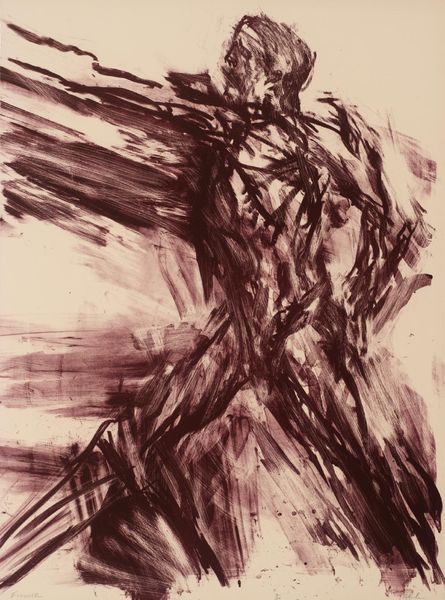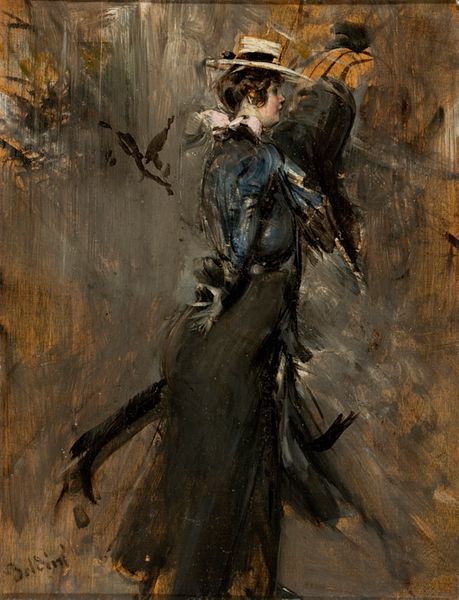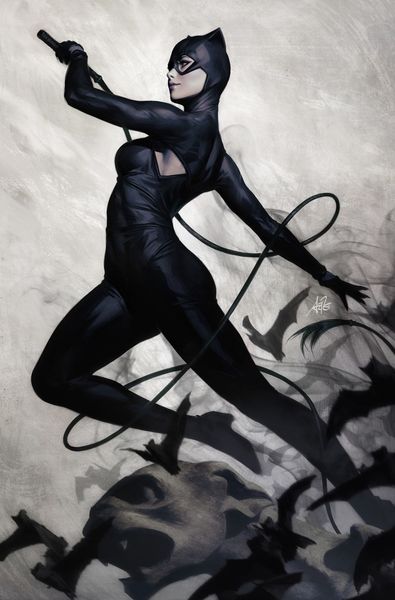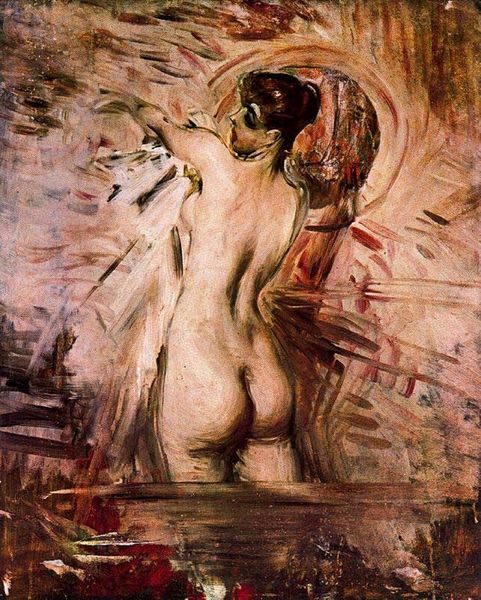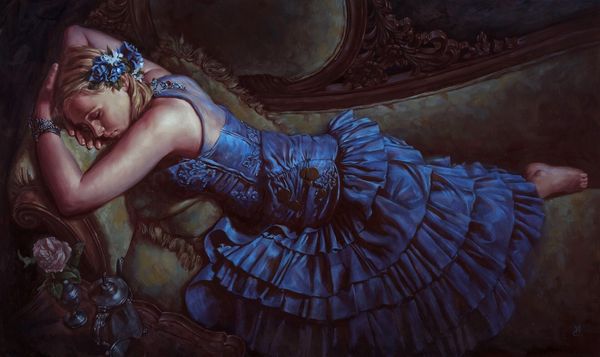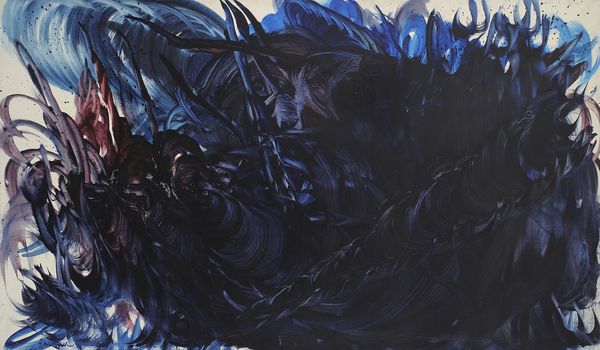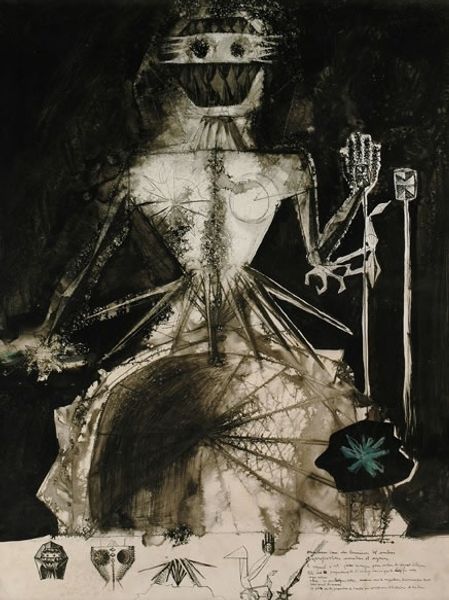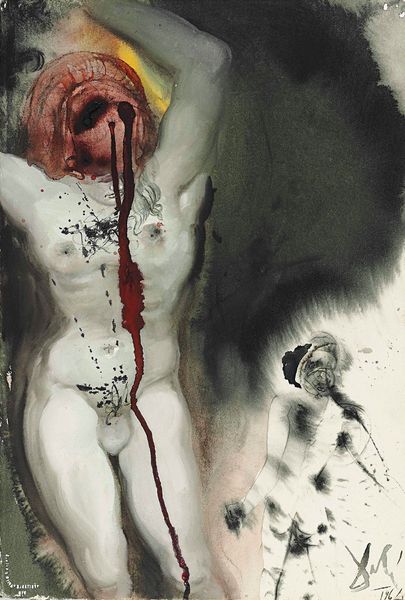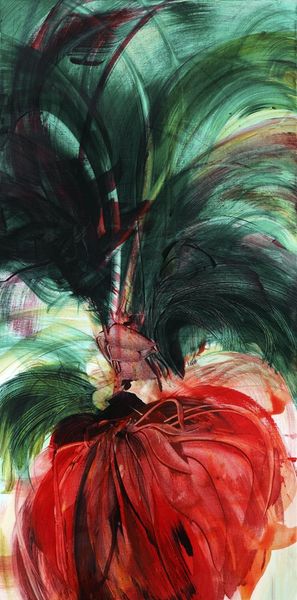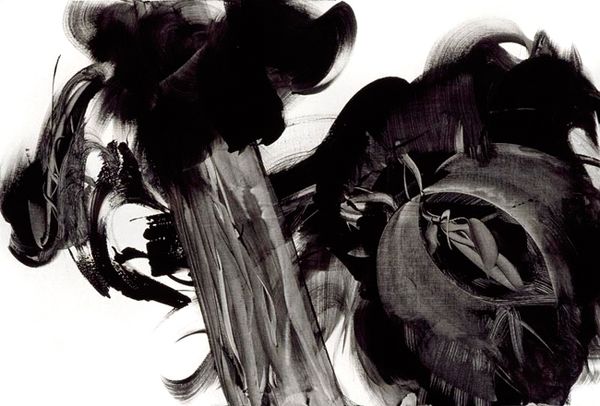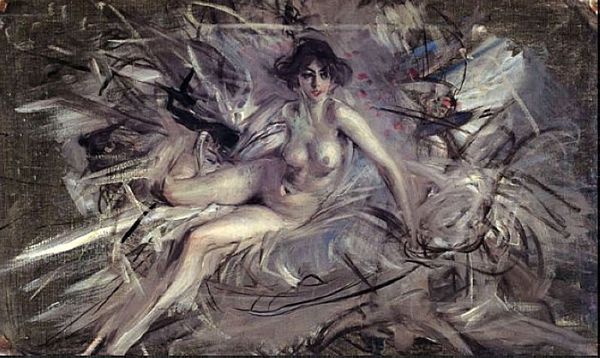
Dimensions: 125.1 x 101.92 cm
Copyright: Public domain
Art Historian: We’re now looking at Giovanni Boldini's “Spanish Dancer at the Moulin Rouge,” painted around 1905. It currently resides in a private collection, I understand. Artist: Whoa, it feels like a tornado of energy was captured on canvas. It's frenetic, dark... there's this underlying passion mixed with a touch of melancholy. Art Historian: Indeed. Boldini's romantic spirit pulses through those expressive brushstrokes, particularly evident in his chosen medium: oil paint, here layered and scumbled to achieve an almost vibrating quality. Do you observe any symbolism related to passion, or possibly danger? Artist: Totally. The dark palette, especially those chaotic blacks around the figure… they remind me of shadowy figures lurking at the edges, you know? As if the performance might not be as carefree as it appears. The red flowers pinned to her corsage—like drops of blood!—that’s definitely tipping towards a darker side of romance. Art Historian: A valid point. Consider that, historically, red is not only associated with love but also with sacrifice, courage, or even divine fury. And dance itself? Frequently employed in cultural practices, a means to bridge mundane reality and transcendence... Artist: Makes you wonder what unspoken stories the dancer carries within herself. Look how her corset's lacework is almost binding, confining… Maybe it's symbolic of the expectations imposed on women of that era? Boldini is obviously showing off how fast and impressionistic he could apply oil, yet, that romantic style is undercut with… unease. It makes her more than just a pretty face. Art Historian: Precisely! Even her positioning, ever so slightly off-centre, unsettles conventional portrait expectations. The whirlwind technique enhances an emotional dynamism, pushing us past a superficial experience. One has to engage, confront...interpret. Artist: Right. I’m sensing a duality: excitement and exhaustion, exposure and confinement... Even the title gives it away! "Moulin Rouge"... It suggests exuberance and liberation and entertainment...yet is it, for the performer herself? Hmm…Food for thought. Art Historian: A truly astute insight. We see again how potent these charged romantic paintings can remain, capturing fleeting moments in an almost unbearably emotive manner, allowing them to become powerful psychological touchstones even now. Artist: Absolutely. It has given me something new to think about... and feel.
Comments
No comments
Be the first to comment and join the conversation on the ultimate creative platform.
